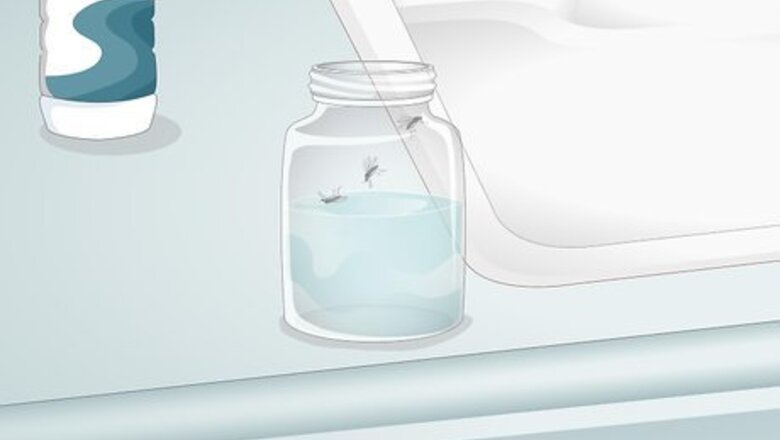
views
X
Research source
Once gnats get into your kitchen, they can lay hundreds of eggs at once and spread quickly. The easiest way to begin getting rid of them is by using household traps and sprays. Since this only takes care of the adult gnats flying around your kitchen, also treat them at the source. Clear out infested soil used for any household plants in your kitchen. Also, clean your kitchen to remove food and water sources. If you’re diligent about clearing out your kitchen, your unwanted visitors don’t stand a chance.
Trapping and Spraying Gnats
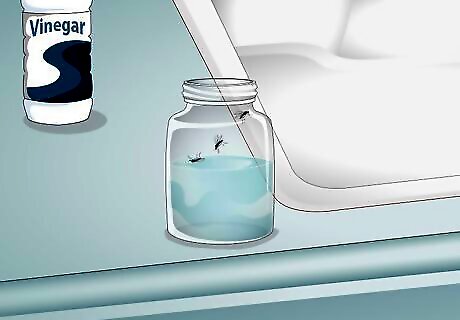
Make a vinegar trap to gradually eliminate adult gnats. No gnat can resist the scent of apple cider vinegar. Combine about 2 tablespoons (30 mL) of the vinegar in about 4 ⁄4 cups (1,000 mL) of water. Then, add about 6 drops of a liquid dish soap. When you leave the mixture out in a container like a Mason jar, the gnats will be unable to fly out of it once they get in it. Try leaving the mixture in a lidded jar or a deep bowl covered with plastic. Poke holes in the lid so the gnats have a place to enter. Replace the mixture as it fills with gnats. To make the mixture more potent, you can add 1 tablespoon (14.8 ml) (12 ½ g) of sugar. Old fruit also works very well. Another option is to use old red wine. The more it tastes like vinegar, the better it will be. Add 6 drops of dish soap, since it prevents gnats from being able to fly out.
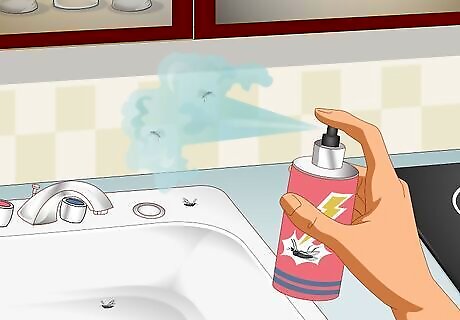
Get a gnat fogging spray for a quicker way to eliminate flying gnats. Traps take a while to collect gnats, but a spray will almost instantly kill anything flying around your kitchen. Look for chemical products designed for use on flying insects. Spray the chemical throughout your kitchen about once a day until the gnats are gone. For safety, stay out of the kitchen until the spray has had a chance to dissipate. Consider wearing a mask when using a spray. Make sure all of your food is well-sealed as well. Then, clean all surfaces thoroughly after the spray has finished working. Note that chemical sprays can be toxic or at least unpleasant to be around. Although many of them are supposed to be safe for indoor use, you might want to leave your house while the insecticide is active.
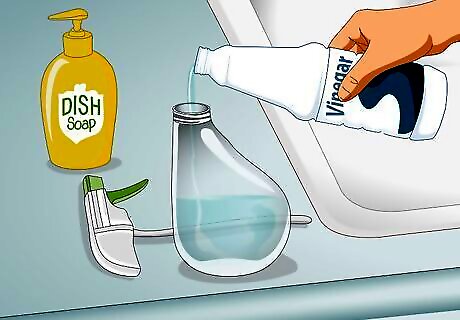
Mix your own spray for an organic way to eliminate flying gnats. You can make a spray that is similar to a vinegar trap. Combine about 1 tablespoon (15 mL) of apple cider vinegar and 1 cup (240 mL) of warm water in a spray bottle. Add about 6 drops of a liquid dish detergent, then begin spraying any gnats you see. Because of the soap, the gnats can’t fly once they get hit with the spray and quickly die. This spray is organic, so it’s safe to use around any plants you have in your kitchen. It also won’t harm anyone else living in your home.
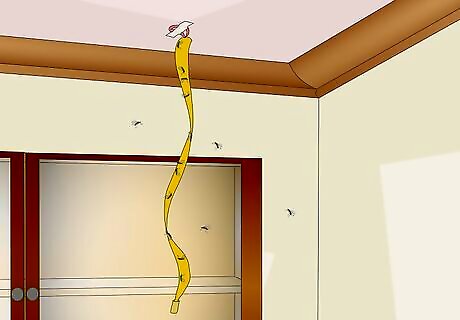
Hang flypaper from the ceiling to catch lingering gnats. Position the strips near where you notice flying gnats. Once the gnats land on the sticky paper, they will be unable to escape. Throw away the old paper as it fills with gnats and replace it with a new one. Flypaper has to be hung from the ceiling, so you may be limited by where you can place it. Many people tie it to fans, curtain rods, and similar objects near the ceiling. Although flypaper is effective and inexpensive, it can’t eliminate gnat larvae and eggs. Combine it with other strategies, such as soil treatment and careful cleaning.
Treating Infested Soil
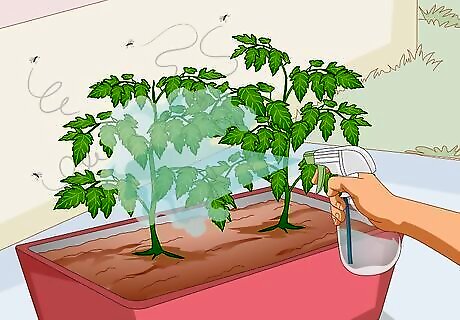
Spray infected plants with a dish soap mixture to eliminate gnats efficiently. Mix together about 1 tablespoon (15 mL) of a dish soap with 8 ⁄2 cups (2,000 mL) of warm water. Lemon-scented dish soaps work very well since the fruit scent attracts gnats. Pour some of the soapy mixture onto the soil or spray it with a misting bottle. It may take a few applications, but eventually it will smother any gnat larvae still in the soil. Organic insecticidal soaps are also great for eliminating gnats. You could also use neem oil, which is an organic pesticide carried by most gardening centers.
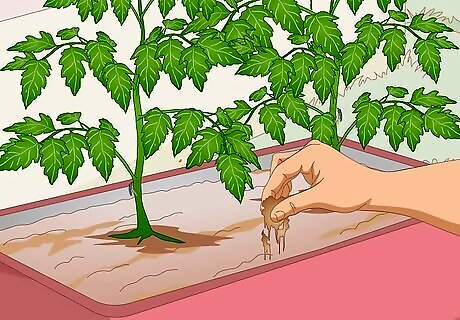
Let the soil dry out if there are still gnats in it. Wait until the upper 2 to 3 in (5.1 to 7.6 cm) of the soil feel dry to the touch. Since gnats don’t dig too deeply, they will be stuck in the dry soil and unable to survive. You can stick a moisture gauge in the planter to monitor the soil’s moistness. Another way to check the soil is by sticking your finger, a rod, or another tool into it. Be careful to avoid overwatering the soil after it has dried out, since that could cause the gnats to return.
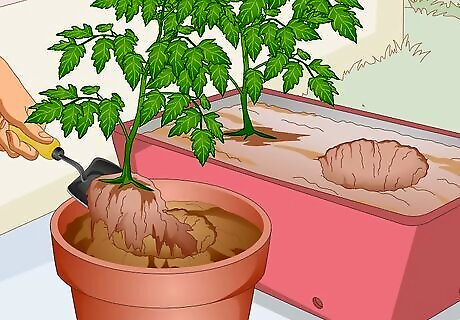
Repot plants if you are still unable to get rid of gnats. Leverage the plant out of the pot carefully to avoid damaging the roots. Select a new pot with drainage holes that will keep the soil adequately drained so the soil doesn’t get damp enough to attract gnats. Then, fill the new planter with a quality potting soil suitable for the type of plant you are keeping. Select soil with slow-decaying fertilizers. Look for ones with perlite, coconut, or charcoal, for instance. Since they decay at a slower rate, they don’t attract as many gnats. To keep plants healthy, avoid overwatering them. Make sure the soil drains well. Try setting the plant on a potting saucer to water the soil from the bottom-up.
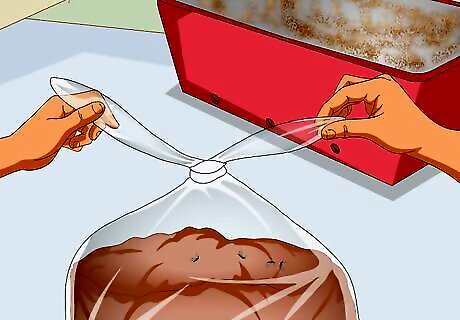
Seal old soil in a plastic bag in case there are still gnats in it. Don’t reuse old soil if you can help it. This includes when you’re transferring a plant to a new pot. Take the soil from the old pot and store it in resealable bags. Make sure it is well-sealed before throwing it away in the trash. Avoid composting it or otherwise leaving it exposed near your home. The same rule applies for unused soil. Close up bags of potting soil, especially if they are outdoors or near your kitchen. Store the soil in a sealed container for protection.
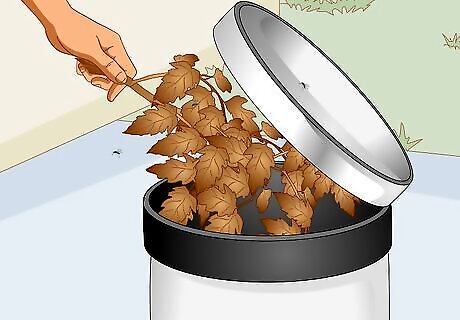
Throw away dying or rotting plants if you can’t save them. Gnats like to live in and near wet, rotting flowers and houseplants. If your plants are in bad condition or are severely infested, you may not be able to save them. Your best option is to seal them inside plastic bags, put them in the trash, and then hand the trash over to your municipal waste disposal service. You can also treat the dying plants and soil with chemicals to prevent the gnats from spreading before you are able to dispose of them. Take precautions to avoid the gnats from spreading. Don’t move infested plants near healthy ones, even if they are outside of your kitchen.
Removing Food and Water Sources
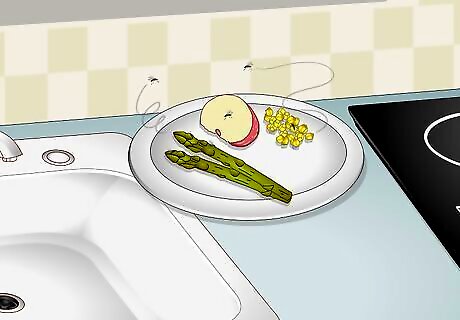
Scan your kitchen for any food that has been left out. Pay particular attention to any fruits and vegetables you have out. As they begin to decay, they attract gnats and other bugs like fruit flies. The only way to ensure gnats can’t survive in your kitchen is to sort through this food and throw away anything that has begun to spoil. Get rid of anything that appears to have bite marks on it as well. Gnats feast on organic material, so anything that comes from plants could be a food source. That includes fruits, vegetables, and roots.
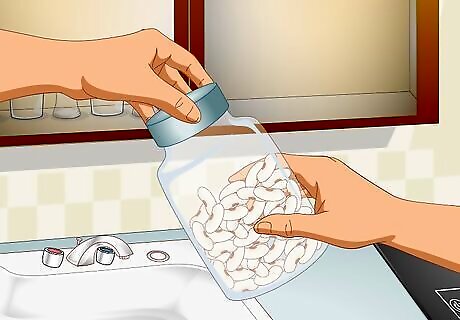
Store dry goods in sealed containers for protection. Make sure the gnats have nothing to eat. It will starve them and force them toward any traps you have out. Keep your dry goods well-sealed in plastic containers. Store them in cupboards or the refrigerator for additional safety. If you notice any food that has been infested by gnats or other insects, slip it into a resealable plastic bag so the bugs can’t get back out. Then, dispose of it in the trash.
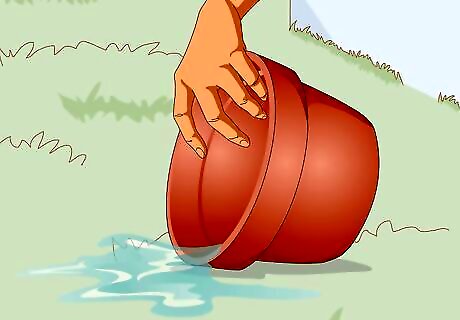
Pour out any standing water that could attract gnats. This can include water glasses, pet bowls, and planting pots. The gnats will take advantage of these to lay their eggs. You can get rid of them by draining the water each day. Refill bowls and glasses only when you’re using them. Move your pet’s water bowl to a room that doesn’t have any food in it. Remind other people to avoid leaving water glasses out while you treat the kitchen for gnats.
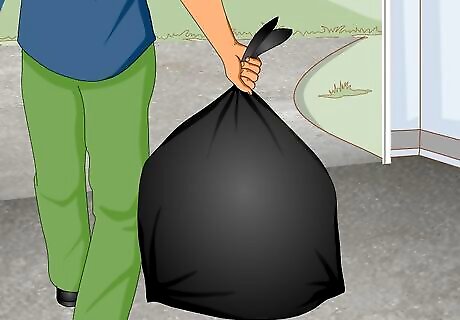
Take out the trash when it becomes full. Keep the trash in a trash bag inside a covered garbage bin until you are able to throw it out. If you have to throw away rotting food, old soil, or anything else that could attract gnats, get rid of it as soon as possible. Take advantage of your neighborhood’s waste disposal service or move the trash out of your kitchen until you can get rid of it for good. Remember to keep trash bags far away from your kitchen if you are unable to get rid of them right away. This is especially true if you have to get rid of decaying fruit or other things gnats like to eat.
Cleaning to Eliminate Gnats
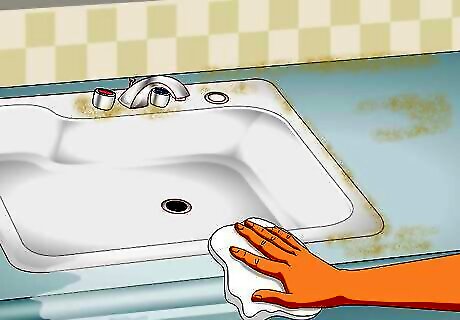
Wipe off your sink and countertops to remove food debris. Remove all solid and liquid debris by washing your countertop on occasion. Mop up any spills as soon as you notice them. Sweep up food particles as well. Wipe these surfaces with a clean, wet sponge after using them. Keeping up with cleaning is very important when you have a gnat problem. Most treatments eliminate adult gnats, but then the young gnats find new food and water sources hidden in your kitchen.
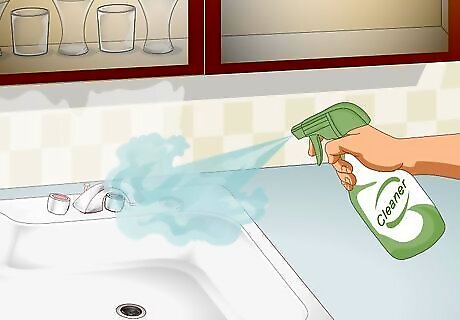
Spray a cleaning product onto all surfaces to sterilize them. Use a nonabrasive cleaner that is safe for the surface you plan on treating. Try making your own cleaner by mixing about 1 teaspoon (4.9 mL) of white vinegar into 1 cup (240 mL) of water. This will take care of any lingering particles that could attract gnats. Consider sterilizing your kitchen after each use. Your sink and countertops can collect a lot of debris, especially after you prepare food.
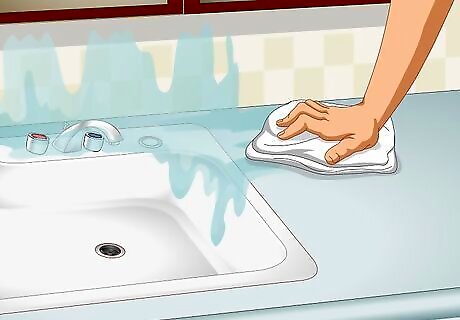
Dry washed surfaces with a paper towel or cloth right away. Remove the possibility of standing water right away. If you treat leftover liquid right away, the gnats won’t have a chance to lay new eggs there. Keep some clean towels handy whenever you’re cleaning and disinfecting your kitchen. Have them available in case of spills as well. Be aware of new spills in your kitchen, whether it’s from food, leaks, or any plants you happen to have there. Regular cleaning will prevent gnats from coming back. Pay attention to areas around the sink. They may fill with water after you do the dishes. If you notice mold or mildew, clean and dry these areas more often. Fix leaks right away, such as by plugging or replacing parts. Leaks not only create the right conditions for gnats, but they can cause damage to your home.
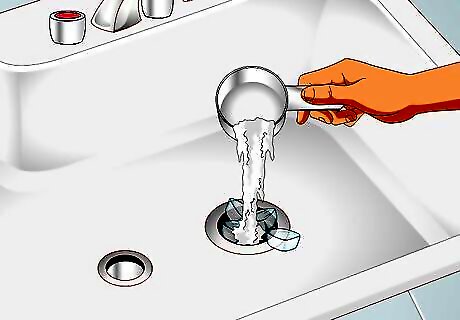
Clean out your garbage disposal to remove stuck food. Run plenty of water through the garbage disposal to start cleaning it. Then, try pouring about 12 ice cubes down the drain, grinding them up with the disposal unit. Follow up with ½ of a cup (257 g) of rock salt and then a couple of citrus peels to finish sterilizing the drain. This will take care of any gnats living in the disposal unit. Another option is to pour 1 cup (240 mL) of white vinegar down the drain, followed by ½ of a cup (90 g) of baking soda.
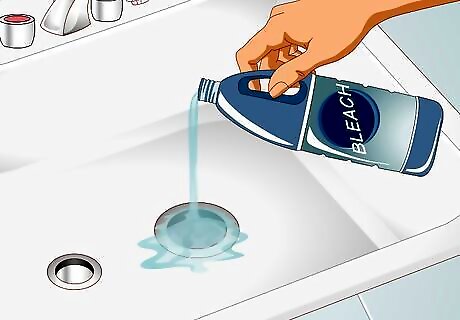
Use bleach or ammonia if you need a stronger way to clean drains. Bleach and ammonia are harsh, so be careful with how you use them. Instead of pouring them directly down the drain, dilute about ⁄2 cup (120 mL) of the cleaner in 16 cups (3,800 mL) of water. Protect yourself by wearing gloves and a dust mask while doing this. Then, pour the solution down the drain to clear the pipes and garbage disposal of debris and gnats. Try choosing an environmentally-friendly bleach to avoid the harsh chemicals. This kind of bleach is often made with hydrogen peroxide instead of chlorine. You could also clean the drain with vinegar and baking soda if you’re looking for an organic solution.
















Comments
0 comment